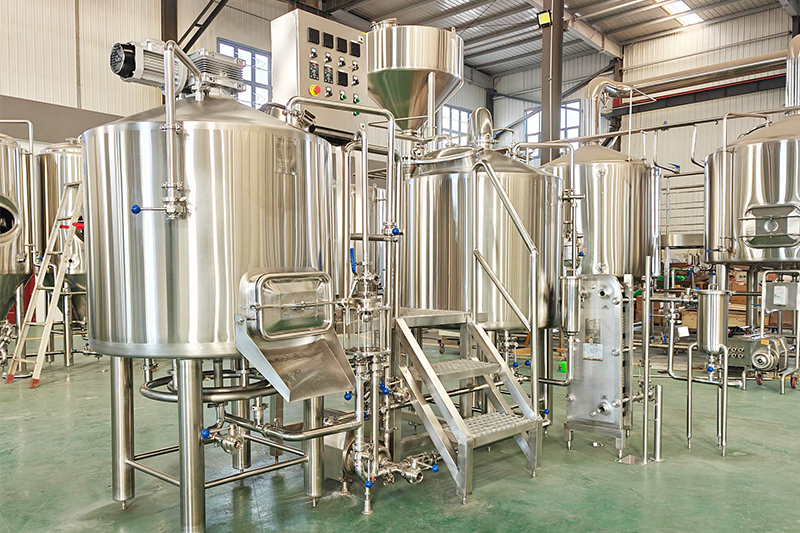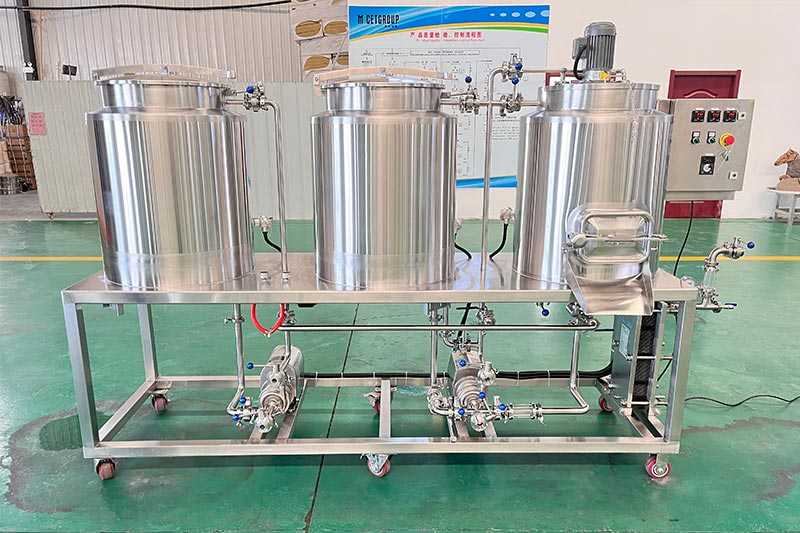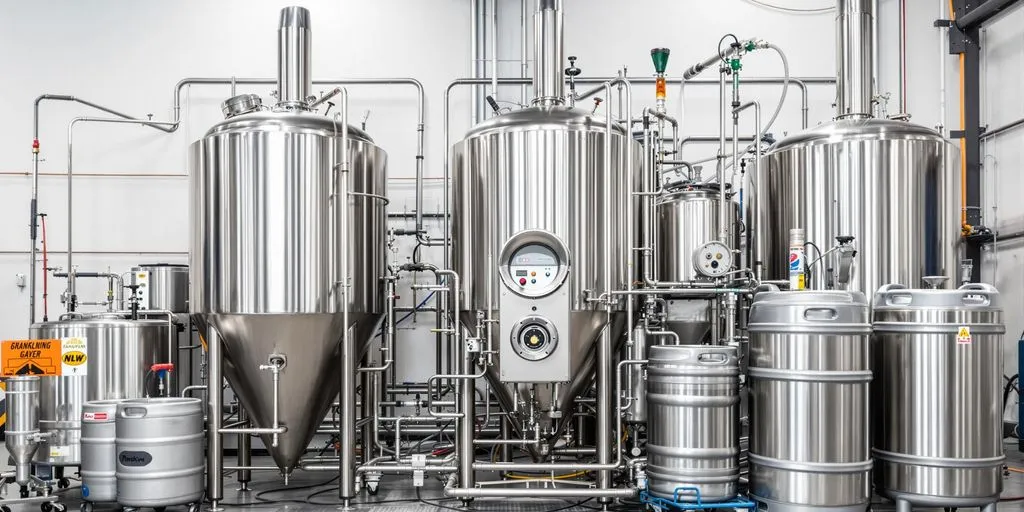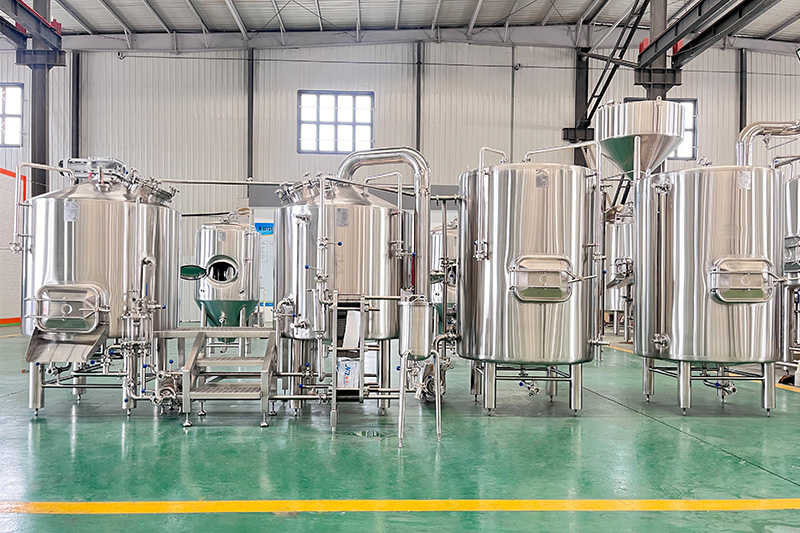Interested in diving into the world of craft beer but uncertain where to start? Nano brewing offers an accessible gateway into professional brewing without the hefty investment of a full-scale brewery. This comprehensive guide delves into the intricacies of nano breweries, the equipment you’ll need, and how to kickstart your brewing journey. Whether you’re a passionate homebrewer or an aspiring entrepreneur, read on to discover how you can turn your beer brewing dreams into reality.

Table of Contents
What Is a Nano Brewery?
A nano brewery is a small-scale brewery operation that typically produces beer in batches of three barrels (3 BBL) or less. Unlike larger breweries, nano breweries focus on crafting unique beer recipes in smaller quantities, allowing for greater experimentation and flexibility. This scale of brewing is perfect for passionate brewers looking to enter the professional brewing industry without the substantial overhead of larger operations.
Nano breweries often serve local markets, providing fresh, craft beer to nearby pubs, restaurants, or directly to consumers. The intimate size fosters a close connection with the community and offers a personalized touch to the beer brewing experience.
Why Start a Nano Brewery?
Starting a nano brewery comes with a host of benefits:
- Lower Startup Costs: Investing in nano brewing equipment is significantly less expensive than purchasing large-scale brewery equipment.
- Flexibility: Small batch sizes allow for experimenting with different beer styles and beer recipes, catering to niche markets.
- Community Engagement: Operating on a smaller scale enables you to build strong relationships with local customers and businesses.
- Scalability: A nano brewery can serve as a stepping stone to a microbrewery or larger operation as your business grows.
By embracing the craft beer movement, nano brewers can carve out a unique space in the market, offering distinctive flavors and brewing techniques not found in mass-produced beers.
Key Differences Between a Nano Brewery and Microbrewery
What sets nano breweries apart from microbreweries?
While both types focus on producing craft beer, the main difference lies in production capacity and scale:
- Production Volume: Nano breweries produce less than 3 BBL per batch, whereas microbreweries can produce up to 15,000 barrels annually.
- Equipment Size: Nano brewing systems are more compact, often fitting into smaller spaces with lower space requirements.
- Market Reach: Nano breweries typically serve local or regional markets, while microbreweries may distribute nationally.
- Investment: The initial investment for a nano brewery is lower due to smaller brewhouse and fermentation tank sizes.
Understanding these differences helps aspiring brewers choose the right path based on their goals, resources, and desired scale of operation.
Essential Nano Brewing Equipment
Equipping your nano brewery with the right tools is crucial for success. Key components include:
- Mash Tun: A vessel where crushed grains are mixed with water to extract fermentable sugars. Temperature control is vital for an effective mash.
- Brew Kettle: Used for boiling the wort with hops. A quality kettle, preferably made of stainless steel, ensures even heating and durability.
- Fermentation Tanks: After boiling, the wort is cooled and transferred here. Conical fermenters are popular due to their design, which aids in yeast collection and beer clarification.
- Heating Elements: Options include electric, gas, or steam. Electric heating elements offer precise temperature control and are energy-efficient.
- Control Panel: Automates and monitors the brewing process, including temperatures, timings, and valve operations.
- Wort Chiller: Rapidly cools the wort post-boil to a temperature suitable for yeast pitching.
- Pumps and Tubing: Facilitate the movement of liquids between vessels, maintaining a sanitary brewing environment.
Investing in high-quality, professional-grade brewing equipment ensures consistency and efficiency in your brewing process.
How Does a Nano Brewing System Work?
Understanding the brewing process is essential. Here’s a step-by-step overview:
- Mashing: Combine milled grains with hot water in the mash tun to convert starches into fermentable sugars. Temperature precision is key for desired sugar profiles.
- Lautering: Separate the sweet liquid, known as wort, from the grain husks. This is achieved using a false bottom or manifold in the mash tun.
- Boiling: Transfer the wort to the brew kettle where it’s boiled, and hops are added. Boiling sterilizes the wort and extracts flavors from the hops.
- Cooling: Use a wort chiller to lower the temperature quickly, preventing contamination and preparing for fermentation.
- Fermentation: Move the cooled wort to fermentation tanks and add yeast. Yeast consumes the sugars, producing alcohol and CO2.
- Conditioning: The beer matures, flavors develop, and clarity improves.
- Packaging: Once fermentation is complete, the beer is packaged into kegs, bottles, or cans for distribution.
Each stage requires careful attention to detail to produce high-quality craft beer consistently.
Choosing the Right Nano Brewing System
How do you select the best nano brewing system for your needs?
Consider the following factors:
- Batch Size: Determine your desired production volume. Common sizes include 1 BBL, 3 BBL, and 3.5 BBL systems.
- System Configuration: Decide between a 2-vessel system (combined mash/lauter tun and kettle/whirlpool) or more complex setups.
- Material Quality: Opt for stainless steel equipment for longevity, ease of cleaning, and maintaining a sanitary brewing process.
- Heating Method: Choose between electric, gas, or steam. Each has its pros and cons regarding efficiency, cost, and space requirements.
- Automation Level: A control panel with programmable settings can streamline operations, though manual systems offer hands-on control.
- Space Considerations: Ensure your brewing system fits within your brewery space, including room for future expansion.
Collaborating with an experienced equipment manufacturer can help tailor a system to your specific needs. Companies like Micet Craft provide customized solutions for nano breweries.

Understanding BBL in Brewing
What does BBL mean in brewing, and why is it important?
- BBL stands for Barrel, a unit of measurement equal to 31 gallons or approximately 117 liters.
- It’s used to quantify brewing capacity and production volume.
- Understanding BBL helps in scaling recipes, planning production schedules, and managing inventory.
For example, a 3 BBL system produces 93 gallons per batch, which influences ingredient procurement and packaging needs.
Heating Elements and Temperature Control
Temperature is a critical factor throughout the brewing process:
- Mashing: Enzymatic reactions occur at specific temperatures, affecting the fermentable sugars extracted.
- Boiling: A vigorous boil ensures proper hop utilization and wort sterilization.
- Fermentation: Yeast activity is temperature-dependent, influencing flavor profiles and fermentation speed.
Heating elements come in various forms:
- Electric: Offers precise control and is suitable for smaller systems. Requires adequate electrical infrastructure.
- Gas: Provides strong heat output but may have less precise control.
- Steam: Efficient for larger systems but involves higher initial setup costs.
Modern nano brewing systems often feature advanced control systems for real-time monitoring and adjustments.
Steps to Start a Nano Brewery
Embarking on your nano brewery journey involves several key steps:
- Research and Planning: Understand the market, define your business model, and create a comprehensive business plan.
- Legal Considerations: Obtain necessary licenses and permits, including brewing permits and health department approvals.
- Securing a Location: Find a space that meets zoning requirements and has adequate utilities (water, electricity, drainage).
- Purchasing Equipment: Invest in quality nano brewery equipment suited to your production goals.
- Recipe Development: Craft unique beer recipes that will define your brand.
- Marketing Strategy: Build your brand identity, establish an online presence, and engage with the local community.
- Launch: Host events, offer tastings, and begin distribution to build a customer base.
Throughout this process, maintaining a focus on quality and consistency will set the foundation for a successful nano brewery.
FAQs About Nano Brewing
Starting a nano brewery can cost anywhere from $50,000 to $250,000, depending on equipment choices, location, and scale. Costs include brewing equipment, site preparation, licensing fees, and initial operating expenses.
Operating a commercial nano brewery from a residential property is typically not permitted due to zoning laws and health regulations. However, you can start as a homebrewer and later transition to a commercial space dedicated to brewing.
A nano brewery allows you to brew a wide range of beer styles, from ales and lagers to stouts and IPAs. The small batch size is ideal for experimenting with new beer recipes and limited-edition brews.
Sanitation is maintained through:
Using stainless steel equipment that’s easy to clean.
Implementing strict cleaning and sanitizing protocols for all vessels and lines.
Utilizing temperature control to prevent microbial contamination during fermentation.
Profitability depends on factors like production costs, pricing, market demand, and operational efficiency. Many nano breweries generate profit through taproom sales, local distribution, and by offering a unique product that commands a premium price.
Many nano breweries expand into microbreweries or brewpubs as they grow. Scaling up involves investing in larger brewing systems, increasing production capacity, and potentially expanding distribution networks.
Conclusion
Embarking on the journey of nano brewing is both exciting and rewarding. With the right equipment, knowledge, and passion, you can create exceptional craft beers that resonate with beer enthusiasts. Remember to focus on quality, maintain a consistent brewing process, and engage with your community to build a loyal customer base.
Key Takeaways:
- Nano breweries offer an accessible entry point into professional brewing.
- Investing in quality nano brewing equipment is crucial for success.
- Understanding BBL and brewing processes helps in efficient operations.
- Temperature control and sanitation are vital for producing high-quality beer.
- Starting a nano brewery requires careful planning, legal compliance, and market research.

For further resources and equipment options, consider exploring:
- Nano Brewery Equipment by Micet Craft
- Beer Brewing Equipment for a range of brewing solutions
- 2-Vessel Brewhouse Systems for efficient brewing operations
- Conical Fermenters for optimal fermentation processes
- Commercial Brewery Equipment when you’re ready to scale up
Embarking on nano brewing is not just about making beer; it’s about joining a community of passionate brewers and beer lovers. With dedication and the right resources, your nano brewery can become a cherished part of the craft beer landscape.

